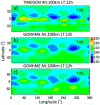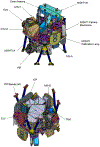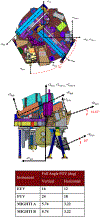The Ionospheric Connection Explorer Mission: Mission Goals and Design
- PMID: 33758433
- PMCID: PMC7983873
- DOI: 10.1007/s11214-017-0449-2
The Ionospheric Connection Explorer Mission: Mission Goals and Design
Abstract
The Ionospheric Connection Explorer, or ICON, is a new NASA Explorer mission that will explore the boundary between Earth and space to understand the physical connection between our world and our space environment. This connection is made in the ionosphere, which has long been known to exhibit variability associated with the sun and solar wind. However, it has been recognized in the 21st century that equally significant changes in ionospheric conditions are apparently associated with energy and momentum propagating upward from our own atmosphere. ICON's goal is to weigh the competing impacts of these two drivers as they influence our space environment. Here we describe the specific science objectives that address this goal, as well as the means by which they will be achieved. The instruments selected, the overall performance requirements of the science payload and the operational requirements are also described. ICON's development began in 2013 and the mission is on track for launch in 2017. ICON is developed and managed by the Space Sciences Laboratory at the University of California, Berkeley, with key contributions from several partner institutions.
Figures




















References
-
- Aiken P, A quiet time empirical model of equatorial vertical plasma drift in the Peruvian sector based on 150 km echoes. J. Geophys. Res 114, 02308 (2009). doi:10.1029/2008JA013751 - DOI
-
- Blanc M, Richmond AD, The ionospheric disturbance dynamo. J. Geophys. Res 85, 1669–1688 (1980)
-
- Bougher SW, Cravens TE, Grebowsky J, Luhmann J, The Aeronomy of Mars: Characterization by MAVEN of the Upper Atmosphere Reservoir That Regulates Volatile Escape. Space Sci. Rev 195, 423–456 (2015). doi:10.1007/s11214-014-0053-7 - DOI
-
- Bowyer S, Edelstein J, Lampton M, Very high sensitivity extreme ultraviolet spectrometer for diffuse radiation. Astrophys. J 485(2), 523 (1997).
-
- Burt J, Smith B, The Deep Space Climate Observatory: The DSCOVR Mission, in Aerospace Conference, 2012 IEEE (IEEE Publications, New York, New York, 2012), pp. 1–13
